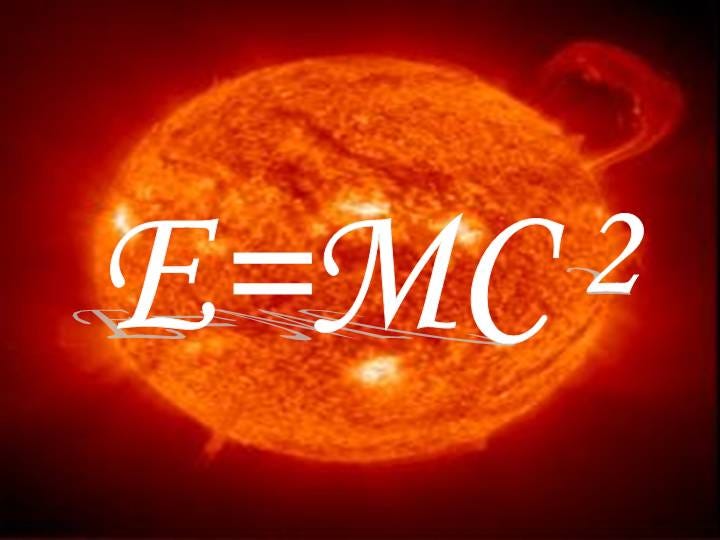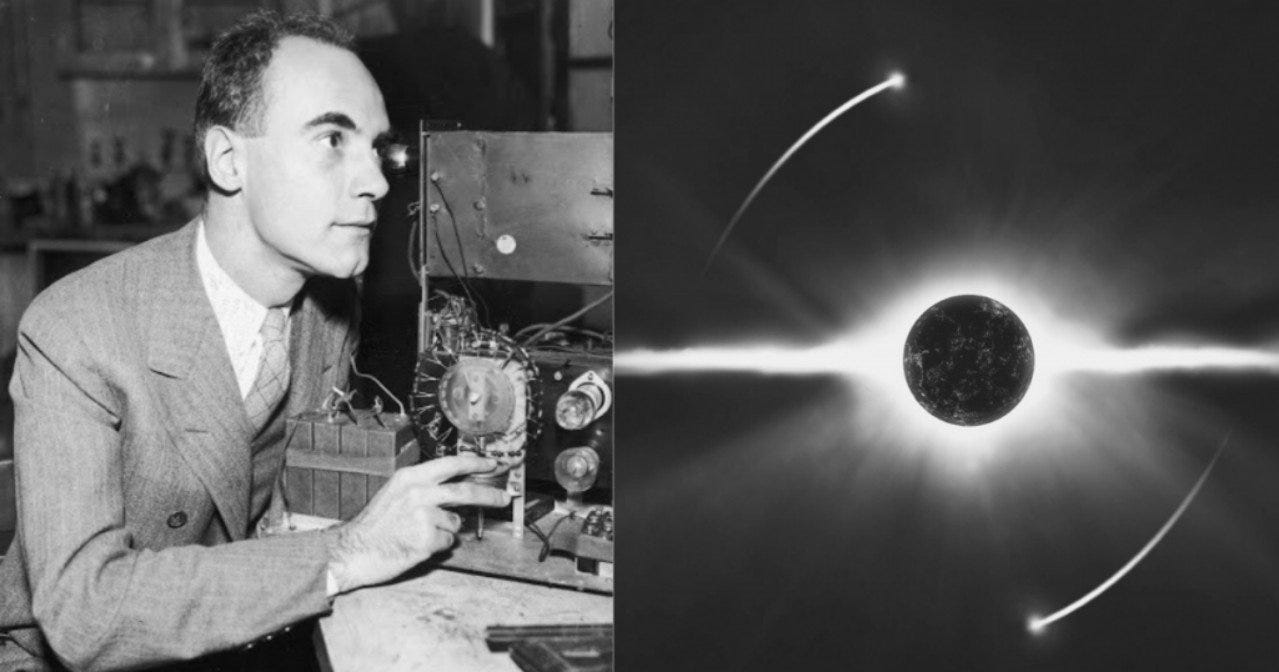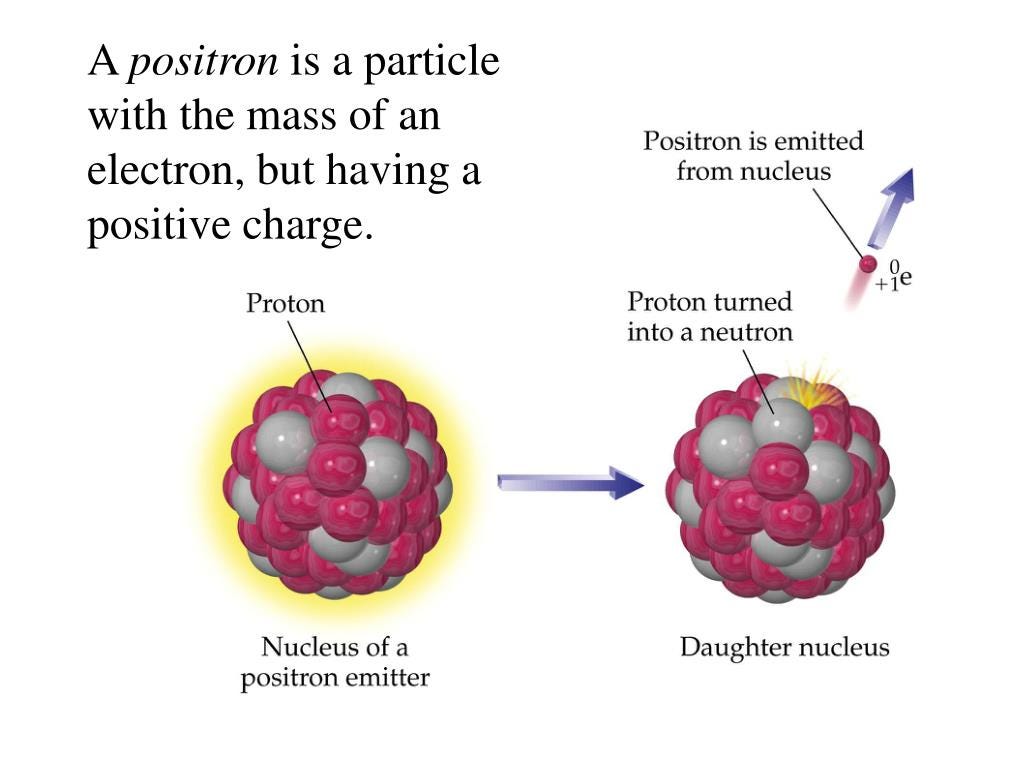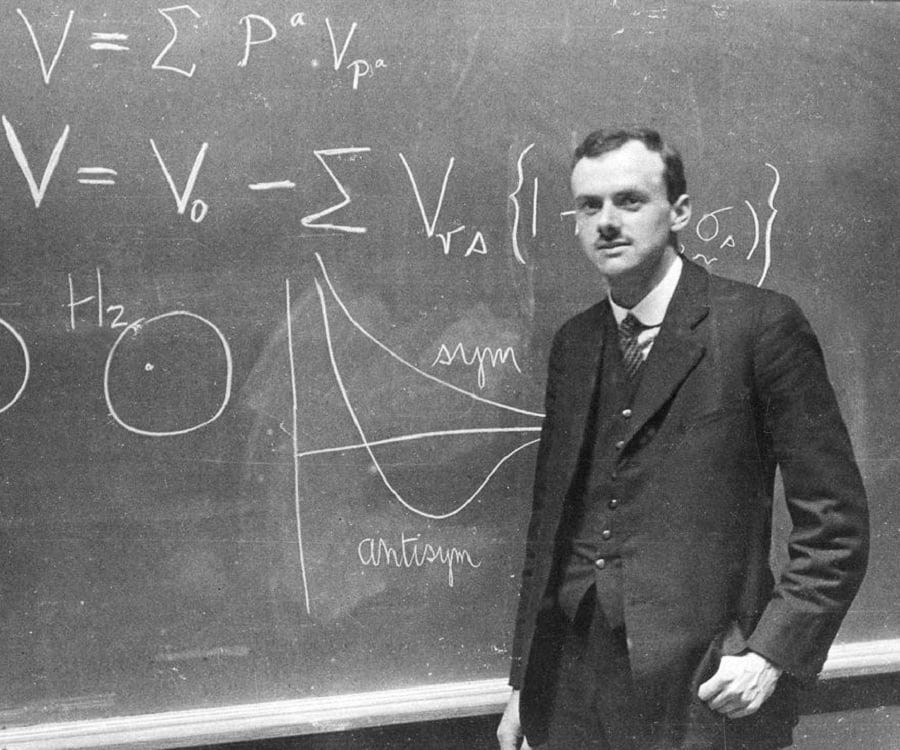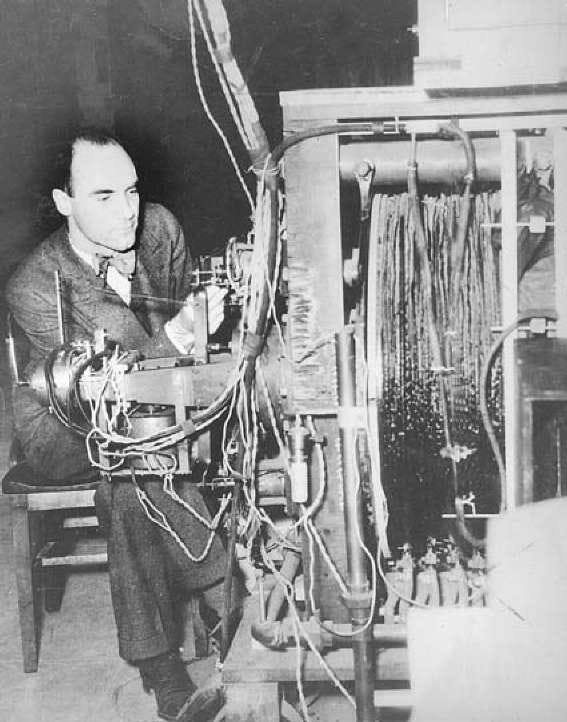Positrons and plasma disprove Einstein, STR and E=mc2. Anderson's 1932 experiment.
As with the Michelson Morley experiment of 1887, 'The Science' ignores evidence it does not like. Anderson disproved E=mc2, STR and quantum mechanics. Not bad.
Prologue
As previous posts have summarised, space is full of particles, matter, and fields. Radiation by itself contains form, energy, and material. Since the medieval period this complex of matter in space was termed an ‘ether’’. Einstein’s STR dogma that the ‘ether’ does not exist is wrong and that by itself nullifies his relativity theory which was an attempt to ‘relativise’ away the literally thousands of experiments from 1810 to his time, which did not find Earth mobility or a diurnal rotation. The ‘ponderable’ ether also abrogates the world’s most famous scientific equation E = mc2. This equation is simply wrong.
Anderson’s 1932 experiment
The micro-world of atoms and particles is still a recent discovery when viewed historically. The electron was discovered in 1897 by J. J. Thomson; the proton in 1911 by Rutherford, Wein, et al., the neutron in 1932 by James Chadwick, and the positron was first identified in 1928 by Paul Dirac and confirmed in 1932 by the American Carl Anderson (1905-1991).
Anderson and Victor Heiss of Austria won the Nobel Prize for physics in 1936 for the discovery of the positron, the first known particle of ‘antimatter’. Positrons are electrons ejected from atoms by interaction with high-energy photons (or light particles). Anderson arrived at his discovery through his intensive research into gamma, x-rays and cosmic rays. While studying photographs of cosmic rays in cloud-chambers, Anderson discovered a number of tracks whose orientation indicated they were caused by positively charged particles, but particles too small to be protons.
In 1932 Anderson announced that the particles were ‘positrons’ or particles with the same mass as electrons but positively charged. Paul Dirac had predicted their existence in 1928. Anderson’s claim was verified the next year by the British physicist Patrick M. S. Blackett. In 1937, Anderson would also discover the short-lived meson. Theoretical discoveries have named some two hundred more nuclear particles, but most, like the meson, are unstable.
Gamma time
In his discovery of the positron, Anderson found that when gamma radiation of no less than 1.022 million electron volts (MeV) was discharged in any point of space, an electron and positron emerged from that point. Anderson also found the converse to be true, that when an electron collides with a positron, the two particles disappear, and produce two gamma-ray quanta which disperse in opposite directions, but with a combined energy of 1.022 MeV. As one set of authors describe his discovery:
“On August 2, 1932, Anderson obtained a stunningly clear photograph that shocked both men. Despite Millikan’s protestations, a particle had indeed shot up like a Roman candle from the floor of the chamber, slipped through the plate, and fallen off to the left. From the size of the track, the degree of the curvature, and the amount of momentum lost, the particle’s mass was obviously near to that of an electron. But the track curved the wrong way. The particle was positive. Neither electron, proton, or neutron, the track came from something that had never been discovered before. It was, in fact, a “hole,” although Anderson did not realize it for a while. Anderson called the new particle a “positive electron,” but positron was the name that stuck. Positrons were the new type of matter – antimatter – Dirac had been forced to predict by his theory.” (Crease and Mann, ed., T. Ferris, p. 78)
An exciting discovery. As with all ‘Science’ the key is the interpretation of what happened. Given the above description a valid inference is the following:
· space is composed of a lattice of very stable electron- positron pairs
· when the proper quanta of radiation are administered, these pairs will either temporarily deform the lattice or jolt the electrons and positrons out of alignment and release them into the view of our bubble chambers
This is what Anderson’s discovery amounts to. There is no need to invent magical processes of ex-nihilo matter creation. But of course, such an explanation is a problem for ‘The Science’. It disproves Einstein’s Special Theory of Relativity (STR), much in vogue and well-funded by 1932, and the emerging (at that time) quantum mechanics model of the micro-universe (which also disproves STR but few are aware of this). Anderson, like many others, had mechanically proven that space was not a void – it contained material and lots of it, a fact we know today to be true.
The philosophers
After Anderson’s discovery two eminent philosophers-of-science, Einstein and Werner Heisenberg weighed in. Einstein needed to save Relativity and Heisenberg quantum mechanics. Relativity theory believes that there is a physical relationship between energy and matter and that space is a vacuum containing no ‘ponderable ether’, to quote Einstein. We know that both assumptions are wrong. But few will have been told this.
In viewing Anderson’s 1932 result Einstein had no choice but to conclude that the appearance and disappearance of the electron-positron pair was an example, as he called it, “of the creation and annihilation of matter.” This ex-nihilo creation of matter is still the strongest proof for the formula E = mc2 or Energy is equal to mass of an object times the speed of light squared. Not only could energy magically become mass, but mass could magically transform into energy. This formula has become the standard interpretation of all subatomic particles. It is pure speculation and it is wrong.
Energy = what?
Einstein’s equation E = mc2 gives the amount of energy E that can be obtained if a mass m is completely turned into energy. This relation can be turned around: if two gamma rays with total energy E collide, they may produce a mass m. However, this is only possible if particles whose masses are m or less can be created (visible light cannot turn into matter because there are no particles with small enough masses). The smallest-mass particles are electrons (negatively charged) and positrons (positively charged), each with a mass corresponding to 0.511 MeV of energy.
The standard ‘Science’ description of how E=Mc2, and how matter is created ex-nihilo, is the following.
Because an electric charge is never created or destroyed, electrons and positrons can only be created in pairs, one of each, with zero total charge.
Two gamma rays, each of energy 0.511 MeV or more, colliding head-on, can therefore produce an electron-positron pair.
If the collision is not head-on, then the necessary energy is greater.
If the gamma rays have more energy than the minimum required, the extra appears as kinetic energy of the newborn matter – the electron and positron are born in motion (Katz, p. 46).
This means pace ‘The Science’, that matter is literally created out of nothing. There is absolutely no proof whatsoever that matter can arise from nothing, and this contradicts the first law of thermodynamics. So here we have Einstein and STR in direct opposition to a known and proven scientific principle.
The first law of thermodynamics, also known as the law of conservation of energy, states that energy can neither be created nor destroyed, but it can be changed from one form to another.
Matter cannot simply be created out of nothing. For the equation to work, m must be defined and its origination declared. The equation achieves neither.
Dirac’s Dirge
English theoretical physicist Paul Dirac had predicted the discovery of the positron in 1928. Dirac’s famous equation predicted that the entire universe was composed of electron-positron pairs, or as they are now termed ‘electropons’. The most unique aspect of Dirac’s analysis was that his equation required two sets of electropon pairs, positive pairs and negative pairs (Dirac, 1928). Dirac however, believed in an active, absolute ether, echoing the same belief found in Newtonian physics, Maxwell’s electro-magnetism and the equations of Lorentz. For ‘The Science’ the ether was anathema. Relativity does not work with an ether.
In 1933 Dirac was awarded a Nobel with Erwin Schrodinger for discoveries of atomic theory productivity. Dirac was famed as a founder of the quantum mechanics movement, quantum field theory, and a critic of STR. Ethereally self-created matter is a convenient philosophical position, not a scientific position, Dirac declared in 1933:
“To get an interpretation of some modern experimental results one must suppose that particles can be created and annihilated. Thus, if a particle is observed to come out from another particle, one can no longer be sure that the latter is composite. The former may have been created. The distinction between elementary particles and composite particles now becomes a matter of convenience. This reason alone is sufficient to compel one to give up the attractive philosophical idea that all matter is made up of one kind, or perhaps two kinds, of bricks.” (Ferris, 1991, pp. 80- 81).
Even in Dirac’s world of quantum mechanics ‘space’ is filled with pairs of ‘virtual’ particles and antiparticles that are constantly materializing in pairs, separating, and then coming together again and annihilating each other. These particles are called virtual because, unlike actual particles, they cannot be observed directly with a particle detector, yet according to Einstein, Hawking et al, they are self-created by the energy of universal gravitation (when in doubt always invoke ‘gravity’!). ‘The Science’ maintains that these self-created pairs of matter can be measured, and their existence has been confirmed by a small shift (the “Lamb shift”) they produce in the spectrum of light from excited hydrogen atoms (Hawking, pp. 107-108).
Hawking and ‘The Science’ try too hard. Dirac and many others who believed in the ether and the first principle of thermodynamics, proposed a more logical and less mystifying interpretation, namely, that the electron-positron pairs are not created through a gravitational-energy force but are already present, jarred loose by radiation. Radiation itself obviously possesses mass and energy. It is a ‘force’ which permeates space and which makes space travel, even to the moon, impossible for living creatures (the moon landing fraud). This ‘Diracian’ interpretation would again destroy the Big Bang, Relativity and even quantum mechanics. It is however the most obvious, sensible and reasonable. Occam’s razor and all that.
Heisenberg’s hate
Einstein and his Relativity cult were not the only ones offended and horrified by Anderson’s positron experiment. Quantum mechanics was also under threat. Werner Heisenberg, the leader of the quantum movement, tried just about everything to destroy Dirac and his ether, except hiring an assassin. Heisenberg loathed Dirac, referring to his work as “learned trash which no one can take seriously” (Werner Heisenberg, Letter to Wolfgang Pauli, February 8, 1934). Open science, tolerance, bi-directional learning and all that.
For six years Heisenberg and his colleagues tried to find an error in Dirac’s equation, but to no avail. Failing miserably, they decided on deceit and mendacity. Although Dirac’s equation required the negative energy electropon pairs to be raised to positive energy pairs, Heisenberg circumvented this process by claiming that the positive energy pairs were merely “created” and had no origin from negative energy. Similarly, as Dirac’s equation required the positive energy pairs to go back intermittently to the negative energy state, Heisenberg reinterpreted this to mean that the positive pairs were “annihilated.”
(Dirac’s equation which baffled Heisenberg, and predicted antimatter or positrons)
If there was any inadvertent crossover between the negative and positive, Heisenberg’s quantum mechanics coined the words “vacuum fluctuation” or “Zero-Point fluctuation” to take care of that problem. More word salads from ‘The Science’. Thus, we reveal the dubious origin of the “creation/annihilation” interpretation of Carl Anderson’s 1932 experiment, all due to fraud and the use of terminological inexactitudes. Yet this corruption and deceit is now ‘mainstream science’ and ‘consensus’.
Ether and the Light
The Anderson discovery was also important for another reason. It revealed that space consists of very dense yet very stable electropon pairings, perhaps in some type of lattice or crystalline structure. You would expect ‘The Science’, to understand that light traveling through a dense medium would be affected. Physics had already been forced to consider this with Einstein’s Nobel Prize- winning theory in 1905 of the photoelectric effect, or the process by which a photon of the right frequency releases an electron from metal, confirmed by Arthur Compton in 1923.
It was therefore known by 1932 that light can be affected by, and produce, physical effects when it interacts with atomic particles. The Sagnac experiment of 1923 had also revealed that the speed of light was inconstant due to the ether around the Earth. There were literally thousands of interferometer results from 1867-1932 with measured Earth mobility of 1-4 km/sec which identifies an ether. This should have suggested to ‘The Science’ that light was being physically affected by some kind of substance in space. We should already know that deeply held religious-scientific beliefs such as the Earth moving at 108.000 km per hour, are not easily jettisoned.
Anderson and E=mc2
Another reason why ‘The Science’ tried to disprove Anderson’s 1932 experiment was that the famous E=mc2 would be proven wrong, or would need entirely new explanations, independent of Lorentz’s complex transformation equations, or Einstein’s religious canons of tensor calculus. These alternative explanations would have to be real - physical, mechanical, and anti-Relativistic. Namely:
· energy (E) is absorbed into open space,
· this result in the release of a mass of electrons and positrons (or various other possible particles),
· and these can then be multiplied by the square of the speed of light to calculate the total amount of energy absorbed
If we accept Anderson’s experiment (since confirmed many times over), we can arrive at E = mc2 by a simple algebraic proportion based on the above (See Simhony, pp. 172-175). ‘Plasma’ physics, which is another description of the positron model, has demonstrated that electropon pairs play an important role in almost every phenomenon in the cosmos, including stars, neutron-stars, pulsars, quasars and gamma-ray bursters (Green, 1998).
No hocus pocus is needed if we accept positron evidence. The origin of inertia for example could be explained quite simply, since around every micro and macro-object there are billions of electropon pairs, which vibrate at a frequency proportional to the velocity of the object. For example:
· If the object remains in uniform motion, so does the vibration energy of the electropon pairs.
· If there is any change in motion, the electropon pairs act accordingly, changing their frequency and energy.
· The energy required to change the values for the electropon pairs is equivalent to the inertial energy of the object.
The same principle could hold for gravity. Any two bodies will disturb the equilibrium of the electropon pairs and will do so based on their masses and the inverse square of the distance between them. Since the disturbance occurs between the bodies, the force will be felt there, and nowhere else (Coulomb’s law). In fact, because the electropons are in a lattice formation, they function very similar to crystalline structure (Laughlin, p. 66). As James Maxwell stated,
“There can be no doubt that the interplanetary and interstellar spaces are not empty but are occupied by a material substance or body, which is certainly the largest, and probably the most uniform body of which we have any knowledge.” (Maxwell, 670, 1873)
The Bottom Line
Dirac’s and Anderson’s positron discovery was another watershed for ‘The Science’. In importance and consternation, it approached the failed Michelson-Morley experiment of 1887, in which Earth mobility was found to be 5 km/sec on average, not the 30 km/sec that Copernicanism demands. Yet, as in 1887, everything depended on the interpretation given to the experiment based on the assumptions and philosophical views of the beholder. If the underlying assumptions are wrong or unproven, then experimental inferences will be incorrect, and it may take decades if not centuries to overturn the paradigm.
Carl Anderson’s experiment is another Michelson-Morley moment. Instead of accepting Anderson and subsequent proofs that there is no vacuum and that space is a plasma-positron lattice of existing matter and anti-matter, ‘The Science’ prefers magic shows, matter created ex-nihilo, curvatures, space-time dimensional union and the violation of basic physics and the first law of thermodynamics. There is now in our ‘modern world’, simply too much money, prestige, investment, reputational risk, and religious dogma to jettison the Relativity-quantum paradigm, no matter how wrong and distorted it is. The bottom line is that Anderson and many others have proven that the positron-plasma lattice exists and this proof negates STR and quantum mechanics, confident online and magazine declarations to the contrary notwithstanding.
Sources
Robert Crease and Charles Mann, “Uncertainty and Complimentarity,” World Treasury of Physics, Astronomy and Mathematics, ed., T. Ferris, 1991.
James Clerk Maxwell, A Treatise on Electricity and Magnetism, 1873
Jonathan Katz, The Biggest Bangs, 1999
Paul A. M. Dirac, Proceedings of the Royal Society A, 117, 610 1928
World Treasury of Physics, Astronomy and Mathematics, ed., T. Ferris, 1991
Stephen Hawking, Black Holes and Baby Universes, 2011
M. Simhony, An Invitation to the Natural Physics of Matter, Space, Radiation, Singapore, New Jersey: World Scientific, 1994
Electron-Positron Physics at the Z, “Series in High Energy Physics, Cosmology and Gravitation,” M. G. Green, Royal Holloway and Bedford College, UK, January 1998
Robert B. Laughlin, A Different Universe, 2005



